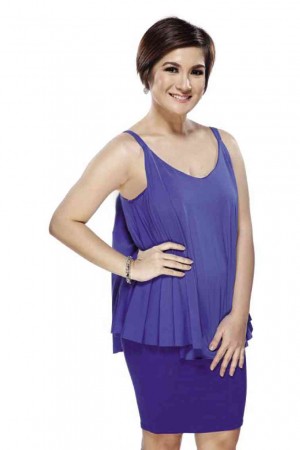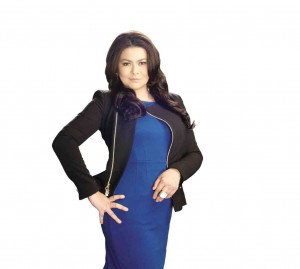Why villains fall short of the menacing mark
Current drama series are fielding not just fresh stellar combinations, but first-time villains, as well. “Blame” it on the sheer number of new dramatic series now being churned out, from early afternoon to late at night. There simply aren’t enough veteran viragos to go around, so new ones are being minted all the time.
Trouble is, “new” doesn’t mean better, or even good. Many new villains are too raw or shallow to elicit fear and trembling in viewers, and a facile shift in “attack,” from upbeat to sadistically sinister, simply won’t cut it.

CARMINA Villarroel’s changes involve no more than trying her best to look maturely sexy and scheming.
Take Carmina Villarroel, who has been “viled up” to cause maximum emotional and psychological damage on “Bridges of Love.” The shift is supposed to be a major departure for her, but she hasn’t been able to pull it off believably, due to the superficial adjustments she has made.
Basically, they involve no more than trying her best to look maturely sexy and scheming, due to the fact that Paulo Avelino used and abused her in the past, to get what he wanted from her late husband’s business enterprises.
Vengeance scheme
Realizing that she had been shabbily treated, she has now embarked on a vengeance scheme that includes marrying Paulo’s father, Edu Manzano, and making sure that Paulo’s new girlfriend, Maja Salvador, will never be happy in his arms!
The motivating story is rich with evil possibilities, but the schemes of Carmina’s character don’t acquire true grit and bite, because she chooses to play most of her “hatefully scheming” scenes in “silent waters run deep” stone-face.
The effect isn’t unnervingly scary and vindictive, it’s merely dull and dyspeptic. So the drama series loses the hateful, rancid core it needs to push its characters to the “extreme” melodrama they need to end up as larger-than-life combatants in the bitter battlefields of love, hate—and high finance!
This is a key reason why the series’ conflicts have thus far failed to come to a satisfying dramatic head, because its key “villainy” factor has been incorrectly assigned. Can’t Edu’s character be made to step in—and fill the gaping blank?
For her part, Camille Prats similarly played “against” her “sweet” image in the recently concluded “Second Chances,” and also did badly, because the adjustments she made were merely nominal. Instead of understanding her evil character’s vicious core, she simply went through the sinister motions, and the show’s horror and terror quotients failed to hit the peaks required.
On hindsight
We trust that the actress has learned her lesson on hindsight and realizes that she isn’t as versatile as she thinks she is.
Aiko Melendez doesn’t do as badly as the resident villain on “Inday Bote,” but her problem is that her virulent portrayal is too big for the purposes of the show. “Inday Bote” is different from other local drama series in that it’s more fantastic and whimsical, in keeping with its resident family of duwendes’ presence.
In other words, its central villain, played by Aiko, should not be terrifyingly evil, because children are watching. If Aiko pulls back and tones down a little, she won’t come off as being too pushy and all over the place.
Just a little note to the hopefully “open” actress.

